
Foreword | Historical Narratives | Resources | Links | Contact
THE CAPTURE OF YORK
History is someone's memories of momentous events.
The Americans spent the winter planning a new strategy for the invasion of Canada. It was the work of the Secretary of War John Armstrong. The first target for the fleet from Sackett's Harbour at the south-east end of Lake Ontario was to be Kingston and the naval squadron at anchor there. With its capture, Britain would lose the lakes and solve "at a single stroke every difficulty." The military had little doubt seven and a half million Americans could easily overrun half a million Canadians. The task would be made much easier as a result of the fifth column in the colony. Recently arrived Americans would surely support their kinsmen coming to take them back into the fold.
Captain and soon-to-be Commodore Isaac Chauncey and Major-General Henry Dearborn disagreed with their superior.The more they pondered the plan, the more convinced they became that it would be shear madness, given the forces they would face. They based their conclusions on American intelligence reports which exaggerated Kingston's military might. As a result of the faulty and grossly over-estimated figures, Commodore Chauncey and General Dearborn believed Kingston was defended by 1500 regulars and batteries totalling fifty guns. In fact, there were only 1200 regulars in all of Upper Canada, scattered throughout the forested wilderness from Prescott to Fort Erie. The inflated figures of fighters at Kingston saved it from direct assault for the duration of the war and really prevented the destruction of the British position in Upper Canada.
Chauncey and Dearborn cast about for an easier site to assault and settled on the poorly defended and very vulnerable village of York. Chauncey was anxious to attack and urged that he be allowed to transport 1500 picked troops and several pieces of light artillery to that target where a small force was on hand to resist him. There were two ships at York: the 18-gun Prince Regent and the 16-gun Duke of Gloucester. Their capture would swing the balance of power on lake Ontario to the United States and greatly facilitate success at stages two and three of their strategy: attacks on the Niagara Peninsula and Kingston, followed, perhaps, by an attack on Montreal. His arguments won the day.
The substitution of the strategically less important provincial capital of York, for the critical base at Kingston eventually proved to be a blessing for Canada and a serious military blunder for the United States. When Chauncey gleefully commented following York's capture, that its fall had inflicted on the enemy, "a blow from which he cannot recover," he greatly overestimated the importance of the capital.
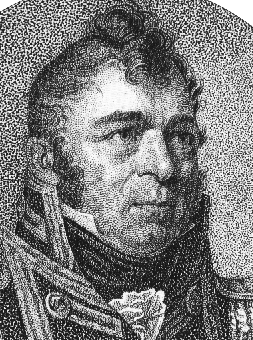 |
|
Commodore Isaac Chauncey |
And so war came to the tiny capital completely unprepared for battle. While York was built into a bull's eye, when it was assigned the role of shipyard and naval base making, it was never given the means of resisting an attack. Major-General Isaac Brock's proposed defensive works to ensure its security were never implemented. General Sir Roger Sheaffe, Brock's successor, urged a month before the American assault that York, "be put into a more respectable state of defence." Nothing was done. York remained a sitting duck and its shipyard became an allurement to the enemy and a heavy burden to bear for the inhabitants of York. Governor-in-chief Sir George Prevost bore the blame for permitting a frigate to be laid down in such an unprotected place.
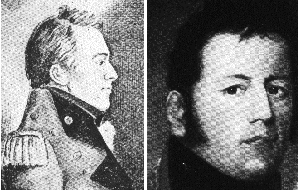 |
|
Brock & Prevost |
In February 1813, Chauncey confirmed that the crew was complete on his new 22-gun corvette Madison. Ice had been kept clear around its bow and all was in readiness for battle. Meanwhile at Kingston, Prevost had not been asleep at the switch. He had collected a full force for his planned attack on Sackett's Harbour and confident of success, had boasted that he would destroy the little American fleet or perish in the attempt. Advised of this assertion, Chauncey, displaying uncharacteristic humour, replied, "The latter I have no objection to, but the former I shall endeavour to prevent. "
In early April ice on the lake was "two feet thick, solid and clear as amber." The weather remained mild and rainy and before long the ice cracked and by the 18th, the lake was safe to sail on. At the same time, Madison was completely rigged and ready with all guns mounted. Chauncey intended to sail for York by the first fair wind with the division under the command of General Henry Dearborn and Brigadier General Zebulon Pike, a military man many felt would rise in rank quickly. Not all shared this view of his worth. One such critic, Captain John Walworth, cautioned his superior, "that the officers of his regiment almost detest him - none of them call to see him except one or two Sap heads. "
On 23 April, 1813, Chauncey, Dearborn and Pike prepared to set sail from Sackett's Harbour with ten vessels and 1700 soldiers and marines. Space was sparse aboard the ships. The flagship Madison with its crew and six hundred soldiers was packed with four times its rated capacity. The brig Oneida, the schooner Lady of the Lake and ten converted lakers were likewise loaded.
Because the forecast was for foul weather, Chauncey recommended a later departure, but Dearborn disagreed and they cast off. Once under sail, the commodore was impatient to deliver the troops to their destination as quickly as possible, for they, "as well as my own men will very soon become sickly." Before long the wind rose and rain came down in torrents. Fewer than half the troops were below deck and those exposed were drenched by the driving downpour. The ships began to pitch and yaw in what soon became heavy going. Fearing worse weather and that the heavily laden ships might founder, Chauncey ordered the fleet about and they returned to Sackett's Harbour.
The 25th dawned bright and clear and under easy sail, the compact invasion fleet of fourteen vessels left harbour. It was to be the first ever combined army-navy amphibious assault in the history of American services. The schooner Julia led off and Madison, Oneida and the lakers followed. The 5-gun schooner Growler brought up the rear. The absence of any foreign fleet to oppose them resulted from the fact that the provincial marine was still patching its old ships. Their destination was hush, hush, so the men were unaware whether it was Kingston, York or Niagara they were about to assault. Whatever the objective, it could not come soon enough, for below deck hundreds of soldiers became violently ill because of the rolling and the reek of the many nearby neighbours packed cheek by jowl.
The British were also building new ships. One big vessel was at the protected harbour in Kingston; the other was under construction at York. Its designated name was, Sir Isaac Brock, the hero whose loudly lamented death on the Heights of Queenston a short time before, had saddened all Upper Canadians and it was hoped, strengthened their resolve to embody his bravery in the conflicts to come. With Brock gone, British strategy was defensive: no one even hinted at offensive operations. The decision to construct Brock at York was to prove costly.
Regardless of the focus of the enemy forces, Upper Canada was facing its darkest period of the war. The American fleet was fast approaching with seventeen hundred soldiers and the tiny town was ill-prepared for the crisis to come. The events were to ruin the reputation of Sir Roger Hale Sheaffe, who had just dropped in for chat when by chance all hades were about to break loose.
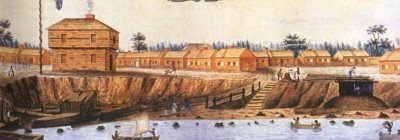 |
|
York Garrison 1812 Military Base for Upper Canada |
High atop the Scarborough Bluffs, sentries peered into the distance, warily watching for any sign of worrisome white sails in the evening breeze..
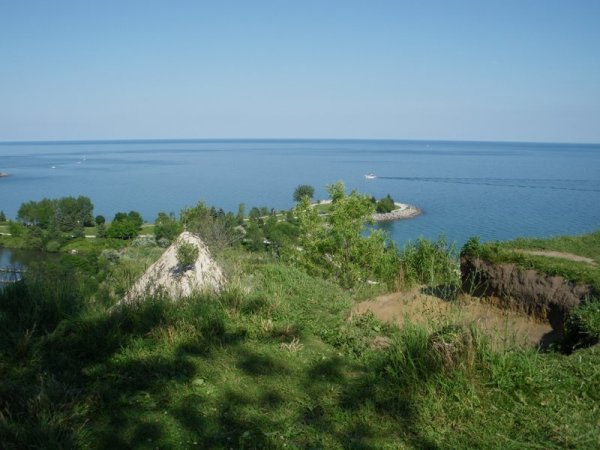 |
|
View from the Scarborough Bluffs |
The bluffs provided a spectacular view of the lake and an excellent place to monitor movement across a great expanse of water. When Governor Francis Bond Head first saw Lake Ontario, he was astonished at is size and compared it to an ocean in the centre of the continent.
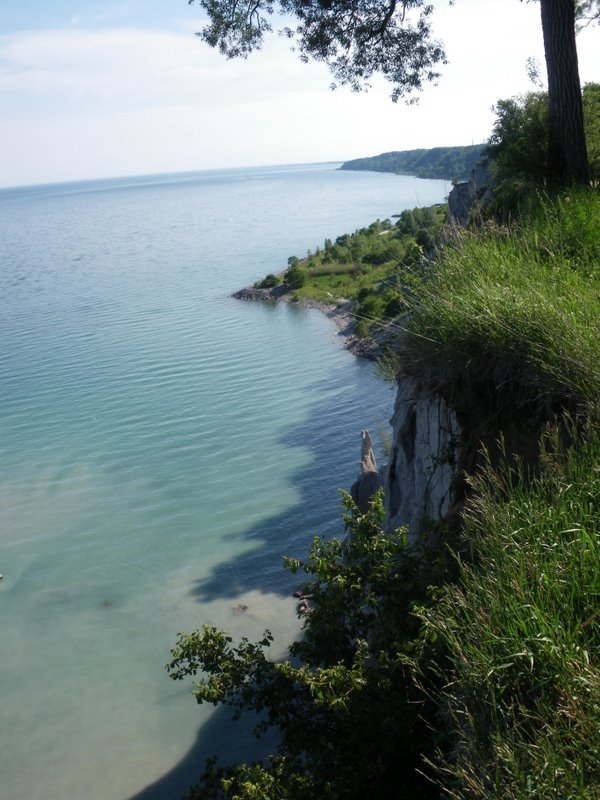 |
|
Looking east from the Scarborough Bluffs |
 |
|
View of Lake Ontario from the Scarborough Bluffs |
The beautiful stretch of cliffs overlooking the lake form what is called an escarpment, that stretches from the eastern beaches in the west to west hill in the east. It was formed after the final withdrawal of a glacier some 13 thousand years ago. Reaching as high as 65 metres ( 213 feet), it extends some 14 km. (8.7 mi.) along the lakeshore.
 |
|
View from the Scarborough Cliffs |
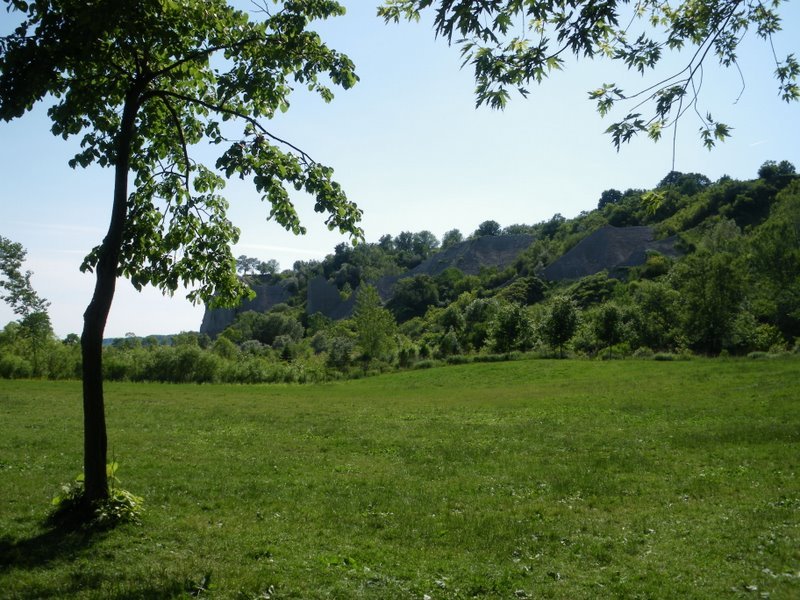 |
|
Scarborough Cliffs |
Although the bluffs were primarily formed over many years by the erosion of packed clay and sandy soil and contain remarkable fossilized plants and animals deposited 70,000 years ago, Elizabeth Simcoe, wife of Upper Canada's first lieutenant governor, dubbed them, Scarborough Bluffs because they reminded her of the limestone cliffs in Scarborough, England. The couple was so taken by the cliffs, they discussed building a summer residence there. Of all the natural wonders along Lake Ontario, the Bluffs are the most breathtaking.
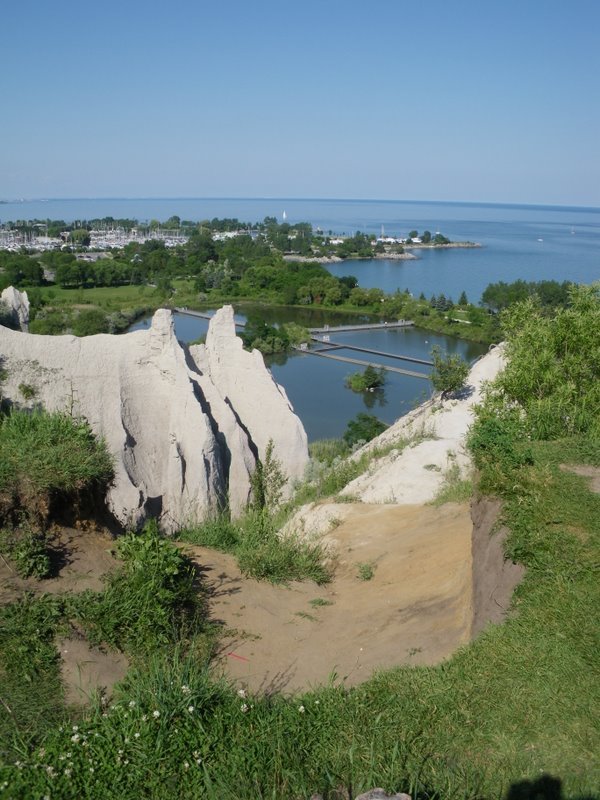 |
|
Scarborough Bluffs |
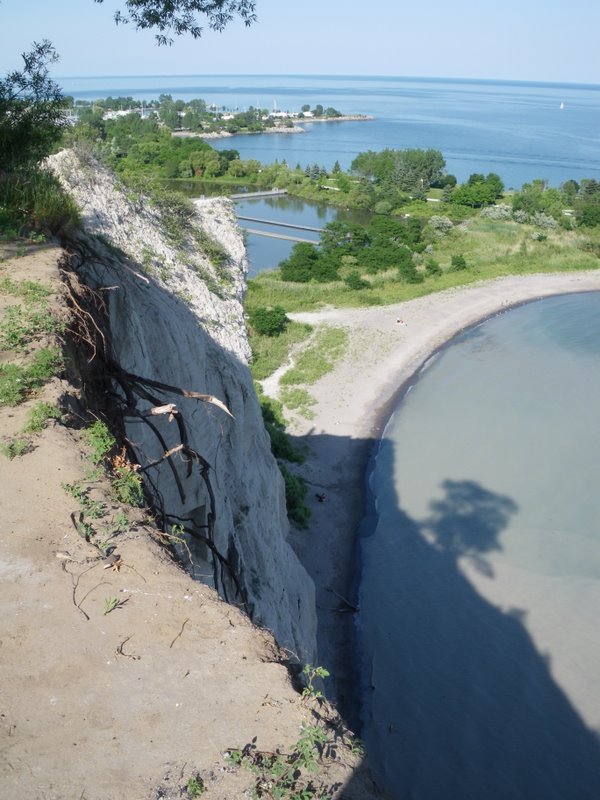 |
|
Scarborough Bluffs |
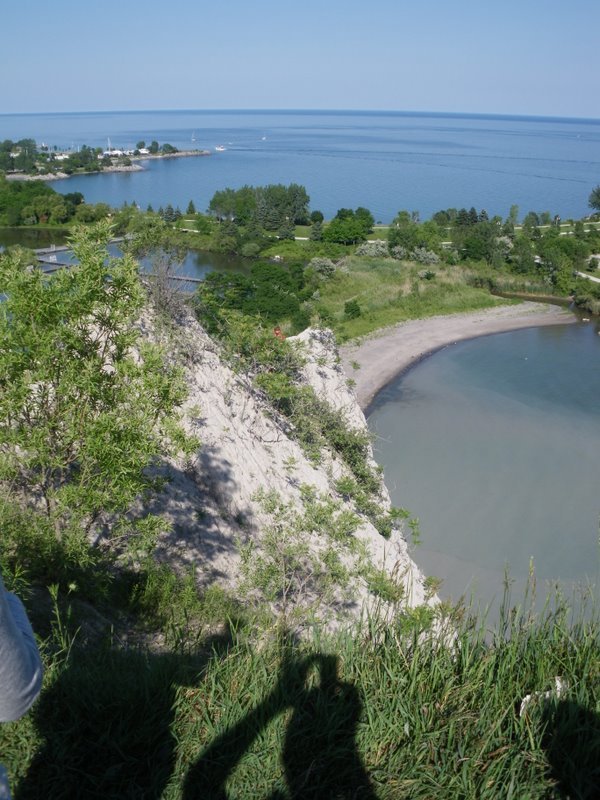 |
|
Scarborough Bluffs |
Early Monday evening on 26 April, sentries atop the Scarborough Bluffs, experienced the dread of enemy ships dead ahead. Semaphores signalled their approach. The tolling bells of St. James Church told of the terrors to come, as the garrison's signal gun boomed out the warning of war and summoned militiamen to York.
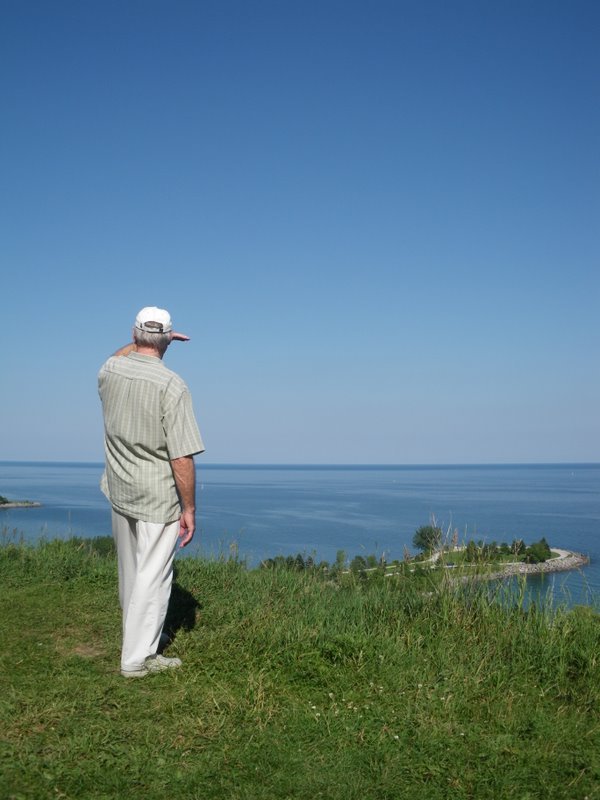 |
|
Sails Sighted! |
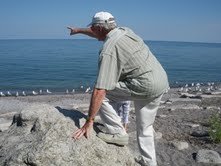 |
|
No Bluffing, Trouble Ahead! |
While chilled, one sentry was also thrilled by the tranquil, untroubled, serene scene before him, the setting sun glittering on the golden surface of the lake and the cloud-like canvasses billowing in the breezes of the north-east wind.
The flotilla's commander, the obese and very seasick Major-General Henry Dearborn, deferred to his aide Brigadier General Zebulon Pike to conduct the landing. Chauncey somewhat permaturely, optimistically declared, "Heaven grant us success and Canada is ours."
Chauncey submitted the following report to the Secretary of the Navy.
USS Madison at anchor off York, Upper Canada, 28 April, 1813"Agreeably to your instructions and arrangements with Major General Dearborn, I took on board the squadron under my command, the general and suite and about 1700 troops and left Sackett's Harbour on the 25th instant for this place. We arrived here yesterday morning and took up a position about one mile south and westward of the enemies' principal fort and as near the shore as we could with safety to the vessels. The place fixed upon by the major general and myself for landing the troops was the site of the old French fort Tarento."
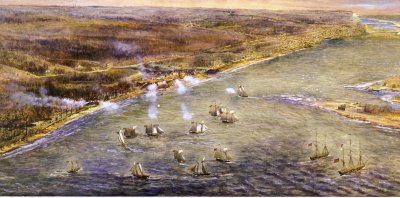 |
|
American Assault on York, April 27, 1813 |
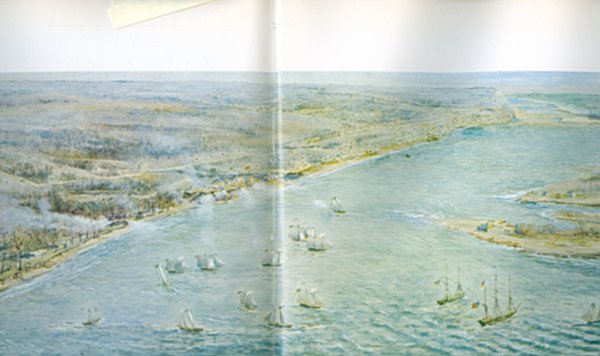 |
|
American Assault on York, April 27, 1813 |
The Task Force came to anchor a half kilometre off shore less than two kilometres west of Fort York, where they and the worried townsfolk of York awaited the coming of dawn. Orders issued earlier by Brigadier-General Pike exhorted the soldiers "to be mindful of the honour of the American army and the disgraces which have recently tarnished our arms." The latter was in reference to the fiascoes suffered by American forces at Detroit and Queenston. Pike urged the men to "endeavour by a cool and determined discharge of their duty to support the one and wipe off the other."
The same ordinance mentioned the ominous consequence should any soldier waffle or waver in the face the fusillades to come. Officers were ordered to "pay the greatest attention to the coolness and aim" of their men under fire and should any man fire or quit his post without orders, he "must be put to instant death." Soldiers were expected to be humane as well as heroic and were instructed to ensure "that the blood of any unresisting enemy would never stain their weapons. Courage and bravery in the field do not more distinguish the soldier than humanity after victory." Soldiers were reminded that many of "the unoffending citizens of Canada are our own countrymen and that the Provinces have been forced into war." Their property was to be considered "sacred" and any soldier who dishonoured his profession by plundering would if convicted be "punished with death." Pike concluded with this prayer. "Heaven grant us success and Canada will be ours."
York was almost defenceless and "a reprehensible apathy appears to have prevailed." The few antique cannons were poorly positioned and largely ineffective. Others intended for use on the ship under construction which might have been used to good advantage were lying on the ground "partly covered with snow and frozen mud." York's defenders numbered only 600 men, made up of 300 York Militia, a company of Glengarry Light infantry, two companies of the 8th or King's Regiment of Foot, one company of the Royal Newfoundland Regiment, thirteen men of the Royal Artillery, a small squad of the 49th Regiment of Foot and fifty or so Missisauga and Ojibway braves.
At eight [*]the next morning American assault craft set off for shore. The alarm was sounded immediately and members of the militia, Native warriors and two companies of the King's Regiment, one of which was a grenadier company, were sent to oppose the landing. A company of the Glengarry light infantry was also expected to oppose them but got lost and arrived too late to assist.
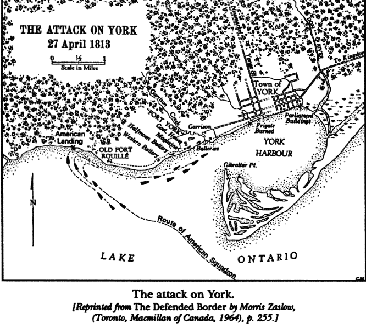 |
|
Attack On York |
Contrary east winds had carried the bobbing boats of the attacking force too far west causing them to miss a clearing near what is now the bandshell at the CNE grounds and land instead near present-day Sunnyside. They were met by spirited fire from Native sharpshooters armed with muskets and rifles whose deadly volleys according to one American attacker served "to quicken our approach." The blue-and-grey clad riflemen jumped into the three-foot deep water, splashed ashore and staggered up the steep bank to secure the high ground. Scarlet-coated grenadiers outnumbered three to one poured out of the pale, green, spring foliage and with bayonets brandished charged into the American ranks in an attempt to force them back to the water's edge. However, to cover their assault troops the American schooners off shore manoeuvred into close range and sprayed the British with a murderous barrage of grape-shot. This continuous, well-directed fire of small iron balls decimated the men and their morale and the redcoats withdrew back into the bush.
Very little attempt was made to rally the untrained militia and within two hours the invaders had established a secure beachhead just west of York. When the firing ceased shortly thereafter they expected to see "a flag of surrender," for according to the Americans "the enemy was received with a spirit which produced a rapid retreat."
Brock's successor, Major-General Sir Roger Hale Sheaffe moved with "one pace on one path." Preferring defence to offence, he rarely sought to seize the initiative and risking-taking was not his preference. His reaction at York was no exception. Military strategists suggest he should have kept his forces intact until the enemy plan was known and then risked all in a sharp, determined counter-attack on the beachhead. Instead he fractured his forces in piecemeal attacks, leading some himself. They were ineffective against the Yankee invaders, famous for "their sharp-shooting and loose fingers."
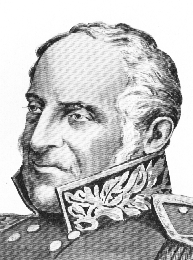 |
|
Roger Hale Sheaffe |
Sensing things were not going well, Sheaffe decided on a strategic withdrawal eastward to Kingston. With him were the invaluable shipwrights and some 180 redcoats ready to fight another day. Before departing he ordered the destruction of everything of worth including the unfinished ship in the stocks and the Grand Magazine, which contained five hundred barrels of gunpowder. The sound of the spectacular blast followed the water along the shoreline and could be heard at the Port of Oshawa some 33 miles away.
The thunderclap, which the Americans mistook for a "subterraneous mine," killed and wounded nearly one-sixth of the invading force, as well as a number of the town's defenders. One witness said that the magazine rose slowly assuming as it did the contours of a vast balloon-shaped cloud from which rained huge chunks of masonry and wooden beams on the heads of those who huddled beneath.
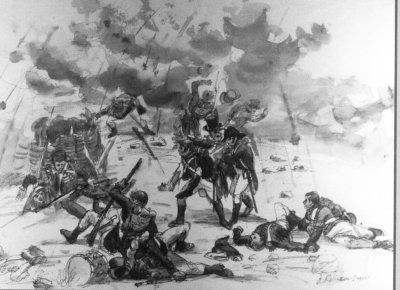 |
|
Exploding Magazine |
"Stones and masonry fell thick as hail, the larger pieces, some a yard-square, sinking into the very earth." York's Sheriff John Beikie's letter to his brother included this comment. "The General ordered a retreat and fire to be set to the magazine. This was the grandest and at the same time the most awful sight I have ever seen."
The American commander, Zebulon Pike had just sat down on a stump to interrogate a captured British sergeant, when with a blinding flash of flame and smoke the infernal blast filled the air with flying missles. Pike's back and chest were crushed in the hail of "stones of all dimensions" that fell upon friend and foe alike.
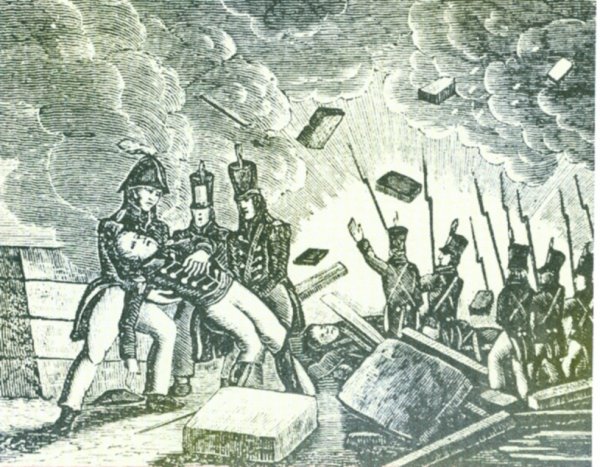 |
|
Brigadier General Zebulon Pike Felled by a Boulder |
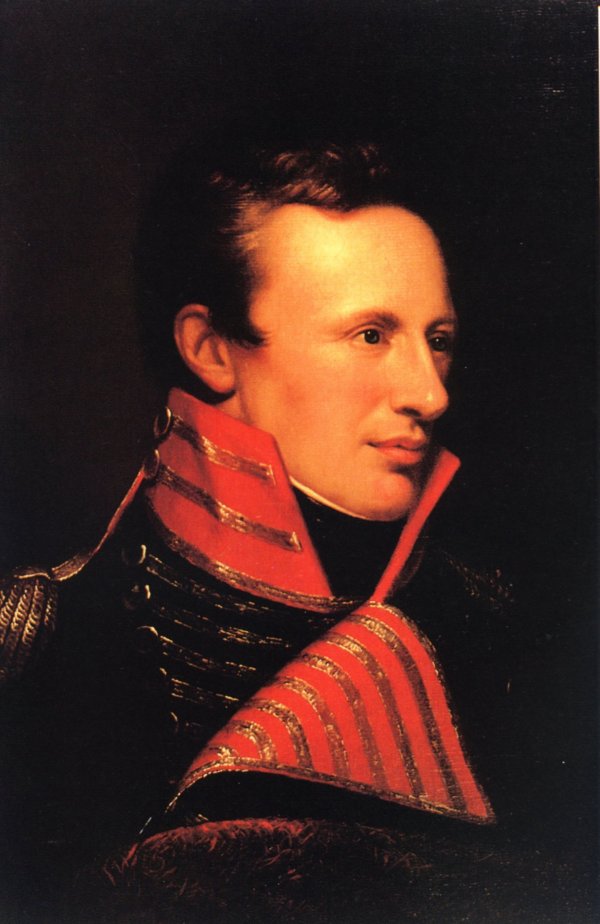 |
|
Zebulon Pike, famed explorer of Pike's Peak. [**] |
As surgeons were removing the general and others from the debris the American troops gave a "tremendous huzza." Pike revived enough to ask the reason for the cheering. "The British Union Jack is coming down, General, and the Stars are going up." Pike heaved "a heavy sigh of ecstasy and smiled even amidst his anguish." Before he had left home that morning Pike had written to his father,"If we are destined to fall may my fall like Wolfe's be to sleep in the arms of victory." He was carried aboard the commodore's ship and as he lay dying the British standard was brought to him. He made a sign and it was placed under his head. The flag was later sent to Mrs. Pike "as a memento of the first victory gained over the enemy in Canada."
Commodore Chauncey left this account of the landing and death of Pike.
In His Own Words"The debarkation commenced about 8 o'clock A.M. and was completed about ten. The wind blowing heavy from the eastward, the boats fell to leeward of the position fixed upon, and were, in consequence, exposed to a galling fire of the enemy who had taken a position in a thick wood. The schooners were obliged to beat up to their position which they did in a very handsome order under a very heavy fire from the enemy's batteries and took a position within about six hundred yards of their principal fort and opened a heavy cannonade upon the enemy. The troops as soon as landed were formed under the immediate orders of Brigadier General Pike who led in a most gallant manner the attack upon the forts. After having carried two redoubts in their approach to their principal works, the enemy (having previously laid a train) blew up his magazine which in its effects upon our troops was dreadful having killed and wounded a great many and amongst the former the ever-to-be-lamented Brigadier General Pike who fell at the head of his column by a contusion received by a heavy stone from the magazine."
Chaos occurred at the casualty clearing station where suffering men with every form of awful injury were sorted according to their miseries. Death was a slow and messy business not often instantaneous in the days of muskets and cannon balls and few surgeons. Surgeons worked frantically "to rescue fellow creatures from an untimely death," The operating theatre in which they laboured to save lives resembled nothing so much as a busy butcher shop. Cries of the mutilated men could be heard above the hollering and blaring bugles and the incessant rattle of small arms fire.
A doctor [*****]described the sad scene. "To hear the poor creatures crying, 'Oh, Dear! Oh, Dear! Oh, my leg. Doctor, Doctor! Do cut off my leg, my arm, my head to relieve me from misery.! I can't live, I can't live!' The cries of those with unstaunched wounds and lopped off limbs would have rent the heart of steel and shocked the insensibilties of the most hardened assassin and the cruelest savage. It awoke my liveliest sympathy and I cut and slashed for 48 hours without food or sleep."
The cause of the explosion was not known to the American soldiers, who suspected some foul enemy ploy, a booby-trapped trick to catch the attackers off-guard after they assumed the fort had been abandoned and the battle won. General Dearborn, resplendent in a uniform that according to eye witnesses, "would not have shamed Napoleon," came ashore enraged and vowed to "make the town smoke for it." He calmed down when he was assured by the Reverend John Strachan that the explosion was an accident, citing the deaths of Canadian militiamen as proof of this, Dearborn promised that the town would not be razed.
Pike's replacement was unable to control his troops, who promptly ignored Pike's admonition against pillage and plunder and ran amok rampaging, looting and burning the public structures and records. The Government Building, the Governor's residence, the Court House and the Block House went up in flames. Beikie's letter mentions the destruction. "After the capitulation then the business of plundering and burning commenced and did not cease until the evening of the 1st inst. When they all went on board their vessels. They have broken every door and window in the council office and burnt a schooner." Only iron discipline controls random looting and theft, when once you cry havoc and loose the dogs of war.
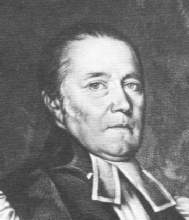 |
|
The Reverend John Strachan |
John Strachan was the only person prepared to confront General Henry Dearborn about the burning and looting. After talking with Dearborn, Strachan recorded that, "He treats me with great harshness, tells me that we had given a false count of the officers and told me to keep off - not to follow him as he had business of much more importance." Strachan, however, did not 'keep off' and continued to dog Dearborn.[***]
A report in the Kingston Gazette angrily attacked the wanton vandalism of the Americans. The account indicated that the burned bare walls "alone remain, a monument to the Gothic ferocity of our enemies." This destruction created a thirst for revenge, which was satisfied by British soldiers when they entered Washington on August 24th, 1814 and torched the White House and the Capitol building.
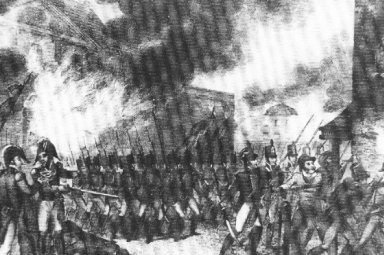 |
|
Washington ablaze |
Howls of protests greeted the smoky glow over Washington. How it was asked had the country come to such a pass, its capital burned and its government publicly despised? Newspapers expressed outrage and called for heads to fall. "The blush of shame and of rage tinges the cheek, while we say that Washington has been in the hands of the enemy. Poor, contemptible, pitiful, dastardly wretches, their heads would be but a poor price for the degradation into which they have plunged our bleeding country."
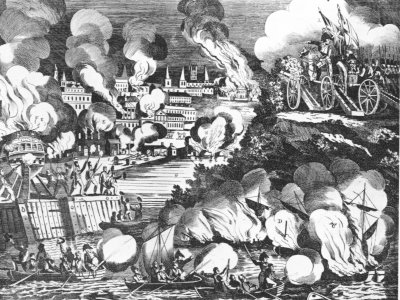 |
|
Burning Washington |
President Madison reported the British action to Congress.
In His Own Words
"Direct communication from the British commander indicates it is his avowed purpose to employ the force under his direction 'in destroying and laying waste such towns and districts upon the coast as may be found assailable' and subsequently British soldiers wantonly destroyed public edifices under the insulting pretext that it was done in retaliation for a wanton destruction committed by the army of the United States in Upper Canada when it is notorious that no such destruction was committed." Subsequent investigation proved the president wrong.
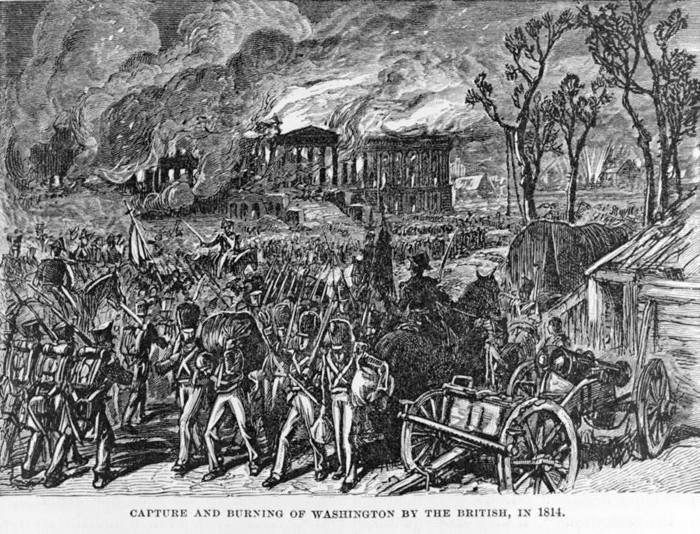 |
|
|
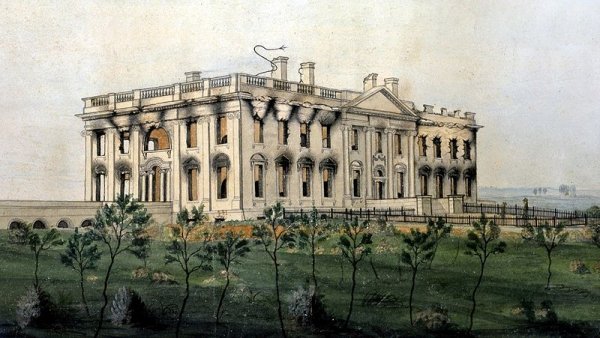 |
|
President Madison's mansion was painted white to hide the blackened stains caused by the fire.
|
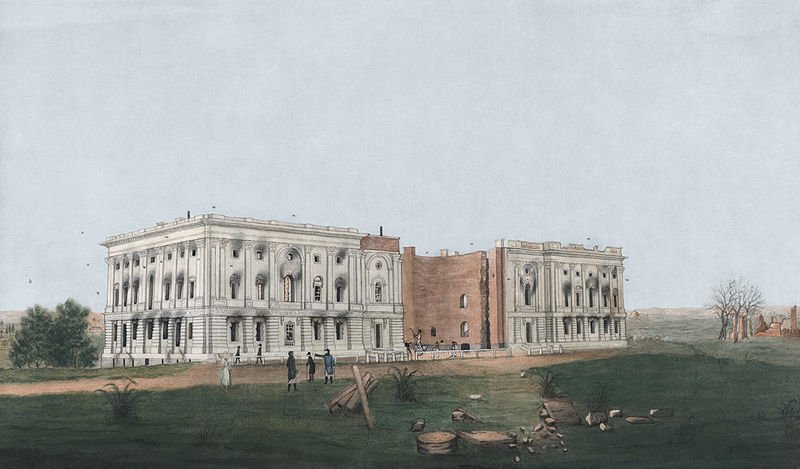 |
|
President Madison's mansion under repair.
|
Even after one hundred and ninety-one years, relics of the War of 1812 still spark cross-border rows, the latest having to do with the fate of booty plundered from the White House when the British sacked Washington. See the excerpt below [****] taken from the Toronto Star dated November 17, 2005.
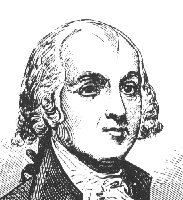 |
|
President James Madison |
When Thomas Jefferson, the ex-president of the United States, harshly criticized the wanton burning of Washington by British troops, the following letter was written to Thomas Jefferson, Esq. of Monticello by John Strachan, Bishop of Toronto.
In His Own Words"In April, 1813 the public buildings at York, the capital of Upper Canada, were burnt by troops of the United States, contrary to the articles of capitulation. They consisted of two elegant halls with convenient offices for the accommodation of the Legislature and of the Courts of Justice. The library and all the papers and records belonging to these institutions were consumed; at the same time the church was robbed and the town library totally pillaged. Commodore Chauncey, who has generally behaved honourably, was so ashamed of this last transaction that he endeavoured to collect the books belonging to the library and actually sent back two boxes filled with them, but hardly any were complete. Much private property was plundered and several houses left in a state of ruin. Can you tell me why the public buildings and the library at Washington should be held more sacred than those at York?" No more was heard from Jefferson.
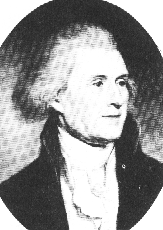 |
|
Thomas Jefferson |
Commodore Chauncey said he was ashamed to have to admit that the books were stolen by American soldiers "much to my mortification." The mace vanished from the Parliament Buildings and turned up later in a the military museum in Annapolis, Maryland. President Franklin Roosevelt returned it 121 years later on the occasion of Toronto's centennial birthday in 1934. Today it hangs on the wall of Fort York.
The public Archives of Canada contain documents covering requisitions for losses suffered in the war. They record that twenty-three people at York submitted the following details regarding losses in 1813: five stores were robbed; thirteen homes entered; farms were raided and horses and cattle stolen. St. James Church lost some of its treasures, a doctor his surgical instruments, a storekeeper two barrels of rum, the town's only printing press was wrecked and an American officer was seen carrying a silver dinner service through town.
The plunder included Sir Roger Hale Sheaffe's baggage, which in his haste he had left behind. Because of the quality of its contents it was highly prized. It included "a handsome assortment of wines" and Sheaffe's "superb scarlet coat, the most elegant thing I ever saw, embroidered in gold and of the finest quality." The coat which cost $300 was sold to an American officer for $55. Sheaffe's other possessions were offered at public auction at Oswego. "All of his things sold very high being good and much wanted by our officers." Sheaffe's musical, jewelled snuff-box, which afforded considerable amusement, was taken as a token by Dearborn himself.
York was captured after some close action, the entire encounter lasting from 8:00 a.m. until the Stars and Stripes were flying above Fort York at 2:00 p.m. The official surrender took place in a house on Palace Street - now Front Street - after Colonel Cromwell Pearce paraded his soldiers through the streets to the tune of Yankee Doodle. The defenders lost sixty-two men killed and listed seventy-seven wounded less than half the American total. When word of the occupation of York reached Washington it was forecast that "the attack and capture of York presaged future and greater victories thanks to the consummate skill and conspicuously heroic valour of the American military."
In the midst of the pandemonium "General Sheaffe set off with the regulars and their officers for Kingston." Instead of staying to get killed or captured, Sheaffe decided on retreat, a decision considered by some to have been sound and sensible militarily. His action was compared by the American secretary of war to "carrying off the kernel and leaving us the shell."
News of Sheaffe's departure from York was greeted with a chorus of lamentations. He was widely criticized for leaving the capital to cope on its own, its 650 undefended citizens, according to Sheriff John Beikie of York, "left standing in the street like a parcel of sheep." Many shared the outraged view of the minister of St. James Church, Dr. John Strachan, that York had been left at the mercy of the marauding American army while Sheaffe's only thought seemed to be for his own safety. Strachan denounced Sheaffe as a commander who was
In His Own Words"destitute of that military fire and vigour of decision which the principal commander in this country must possess in order to preserve it."
Sheaffe, meanwhile, had ridden off in hot haste, heading eastward down King Street across the Don River towards Kingston, leaving his troops to follow on foot. When he arrived at Levis Annis's hotel in Scarborough some 12 miles east his horse was well lathered from the hard gallop for he had ridden from York "without drawing rein."
According to one observer, Sheaffe's actions earned him the "universal reproach of every man and woman." While some of the complaints were described as "the idle exaggerations of the ignorant which were beneath notice," others came from military men and could not be ignored. Officers of the militia "soberly and seriously concurred in the general criticism of Sheaffe." It was even suggested that Sheaffe should be indicted for misconduct. Among "the most clamorous of the impeachers" was a Major Allan whose main complaint was that Sheaffe had given him no orders.
Sheaffe's conduct on that occasion did not redound to his credit for it seemed to many citizens that York's loss was not veiled in a blaze of heroism. At the time a drumfire of debate in press and public raged around Sheaffe and disagreement persists to this day as to whether his decision to leave the capital to its captors was wise or wimpish. A final decision still awaits the impartial verdict of history. Both Prevost and Sheaffe were faulted for this sad affair, Prevost for permitting military and naval stores badly needed for Lake Erie to be poorly defended and a large sloop of war to be built in so exposed a position. Sheaffe was faulted for failing to have fortifications well ordered, not concentrating his troops and ensuring better order and alertness. He appears to have acted without any fixed plan.
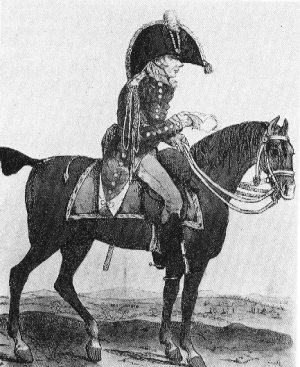 |
|
Caricature of George Prevost |
Sheaffe was weighed in the balance and found wanting by many, who had the ear of history. His retreat finished his career in Canada and he left for England. In Quebec, Sir George Prevost informed London that Sheaffe had "lost the confidence of the Province by the measures he pursued in its defence." A Sheaffe supporter argued that Sheaffe "was sacrificed to Ignorance and Jealousy" by those who did not understand his character. It seems the British government agreed for Sir Roger was raised to the rank of lieutenant-general in 1821 and to general in 1828. Sheaffe died in Edinburgh in 1851.
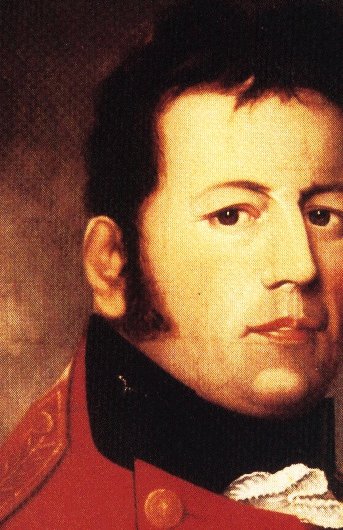 |
|
Sir George Prevost |
The surrender terms contained three points: that regular, militia and naval personnel - other than surgeons - become prisoners of war; that naval stores be given up but private property be guaranteed to citizens; that papers of the civil government be retained by its officials. Since American vessels were already overloaded the militia prisoners were paroled. The Americans left as soon as they could since there was no point in staying because their ships were vulnerable to attack. The invaders carried away way all they could and destroyed the rest. They took with them two vessels: the Duke of Gloucester and the privately-owned General Hunter. They captured 28 guns of different calibres from 32s to sixes as well as blankets, large quantities of fixed ammunition, shot, shells and munitions of war packed in boxes destined for British troops in Niagara and Malden. The loss of the armaments and naval stores intended to equip the British squadron at Amherstburg, led to serious consequences on Lake Erie.
The capture of York had no major effect on the course of the war. However, York with its militia paroled and defences destroyed could be captured at will, subject only to naval power on Lake Ontario. The sight of sails caused alarm for the remainder of the war. Often over the next few months tall ships of sail flying the dreaded striped flag hove into view from the Scarborough Bluffs. Each time the alarm sent citizens scurrying to pack their most valuable goods and high tail it to the woods that lay beyond the township square bounded by Gerrard to the north, Parliament to the east and Spadina to the west where they were hastily hidden.
However, American cannon fire fell elsewhere and York became the base hospital for casualties from the bloody campaigns on the Niagara Frontier. The wounded from that conflict filled the general hospital and overflowed into private homes. Even St. James Church was converted into a hospital "from the pure air of which the progress of the sick and wounded was brought to a state of convalescence."
[*] This time is according to the Americans. It is interesting to note that Sheaffe reported that the contest commenced between 6 and 7 o'clock. There was then no agreed world time base and each locality had its own notion of correct time which varied drastically from place to place. [**] A mountain in Colorado was explored by him in 1806, but it was known by Natives and some Spanish explorers long before. [***] .In fact, Strachan's will power and personal presence were so strong it was said later that at times it was difficult to tell from the interview which of the two men was the conquered and which the conqueror. When he hinted at the possibility of a terrible retaliation by the British Navy Strachan went a long way toward saving York from complete destruction. [****] According to an article in the Toronto Star dated November 17, 2005, a Canadian filmmaker has launched a crusade to stop U.S. treasure hunters from scavenging the wreck of HMS Fantome, which many believe was returning to Halifax with loot from the White House and Capitol Building when she sank in a storm on Nov. 24, 1814. "It is not beyond imagination to see silverware stolen from the White House end up for sale on Ebay," said John Wesley Chisholm, who hopes to make a documentary film about the site. "The province should revoke or suspend the licence for this site. On a larger scale, the entire (Treasure Trove Act) should be abolished."Curtis Sprouse, founder of Sovereign Exploration Associates International, scoffed at Chisholm's criticism, saying it is companies like his that help uncover history and bring it to the public. "We believe that preservation of history and presentation of history is of utmost importance," he said. "We are very proud of the approach we are taking." A subsidiary of Sovereign Exploration Associates got a permit from Nova Scotia to scavenge a site near Prospect, a small town on the coast of Halifax that is surrounded by dangerous shoals.
Many believe those shoals brought down a convoy of ships returning to Halifax from a series of key battles in the War of 1812. In August 1814 British soldiers invaded Washington D.C. They looted the White House and Capitol Building, and set fire to both. A rainstorm prevented the rest of the city from burning. Dolly Madison, wife of then-president James Madison, rescued just a few items from the White House moments before the soldiers arrived, but everything else was stolen or burned. At least some of the booty made it north for Canadian Archibald Kains returned a jewellery box to the White House in 1939 that he said was stolen by his grandfather 125 years before. The fleet of ships then attacked Baltimore. That battle inspired the national anthem penned by Francis Scott Key: The Star-Spangled Banner. The ships then sailed for Halifax. The theory is that they mistook Prospect for Halifax Harbour in a bad storm, and turned in to the shoals. Historians believe that up to four ships were sailing with HMS Fantome when it went down.
Divers and archeologists working for Sovereign began exploring the shoals this year. Sprouse stressed they haven't confirmed the Fantome convoy is there. The shoals near Prospect are littered with huge boulders that regularly crush the ocean floor. Sprouse pointed out that no ships are left on the site; divers only hope to find fragments of historic artifacts and treasure scattered and buried beneath the waves. "This is not what people imagine when they hear shipwreck. There is no ship," he said. "This area has huge boulders the size of a house that roll around even on a normal day. There is nothing to disturb, because anything a diver could do would be undone by nature in just a few days."
Chisholm wants the law changed to avoid historic treasure such as the wealth of the 19th century White House from falling into private hands. Under provincial law anyone with a treasure trove licence can keep precious metals or gems they find under the sea regardless of the historic significance. The law requires a 10 per cent royalty on official "treasure." Provincial law also requires all artifacts that aren't considered treasure be returned to the province and it requires that treasure hunters work with archeologists on sensitive sites, such as the Fantome wreck.
"If the item is deemed to be treasure, then it becomes the licensee's property to dispose of as he or she wishes," confirmed Tim Dunne, spokesman for the Nova Scotia Department of Natural Resources."But you have to remember that this was at one time private property. If it hadn't gone down in Nova Scotia it would still be private property in someone else's hands."
[****]Interesting article appeared in Military History, April 2010, page 10, titled British Claim ownership of sunken, stolen, War of 1812 relics found off Nova Scotia. "An ownership debate about valuables looted from Washington, DC, by loyalist troops during the War of 1812 has pitted the British against the Americans once again. Last fall divers from U.S. based Sovereign Exploration Associates finished a reconnaissance of a double shipwreck site off the Nova Scotia coast uncovering artifacts that include White House china, silverware, Capitol relics and coinage from the U.S. Treasury. One of the vessels is believed to be the British frigate HMS Fantome, which sank while leading a convoy back to Halifax after the 1814 sacking of Washington. Following the discovery the British High Commission claimed ownership of the warship and its contents under the United Nations Convention on the Law of the Sea. Based on that British claim the provincial government of Nova Scotia rejected a recovery permit application filed by the salvage company. The site will remain off-limits until the Americans and the British can come to terms. (Dueling pistols, anyone?)" [*****] According to British army regulations a surgeon and a mate were attached to each regiment of foot. Sometimes the offices of captain and surgeon were combined in one person. Many of the medical officers were Scotsmen because the availability of facilities for the study of medicine at Glasgow and Edinburgh in the 18th century. However, in many instances the surgeon's knowledge of medicine was slight. They were not required to hold a medical diploma or degree and the mates were not required to pass any medical examination. The medical service in short was meagre and the feeling seems to have been that it was cheaper "to levy a recruit than to cure a soldier."Copyright © 2013 Website Administrator